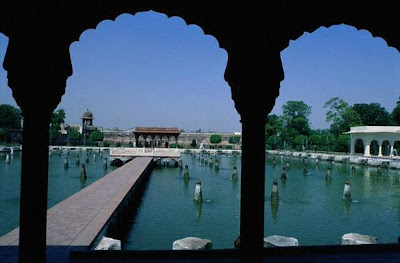The site of the Shalimar Gardens originally belonged to one of the noble Zaildar families in the region, well known as Mian Family Baghbanpura. The family was also given the Royal title of 'Mian' by the Mughal Emperor, for its services to the Empire. Mian Muhammad Yusuf, then the head of the Mian family, donated the site of Ishaq Pura to the Emperor Shah Jahan, after pressure was placed on the family by the royal engineers who wished to build on the site due to its good position and soil. In return, Shah Jahan granted the Mian family governance of the Shalimar Gardens. The Shalimar Gardens remained under the custodianship of this family for more than 350 years.
In 1962, the Shalimar Gardens were nationalised by General Ayub Khan .
In 1962, the Shalimar Gardens were nationalised by General Ayub Khan .













